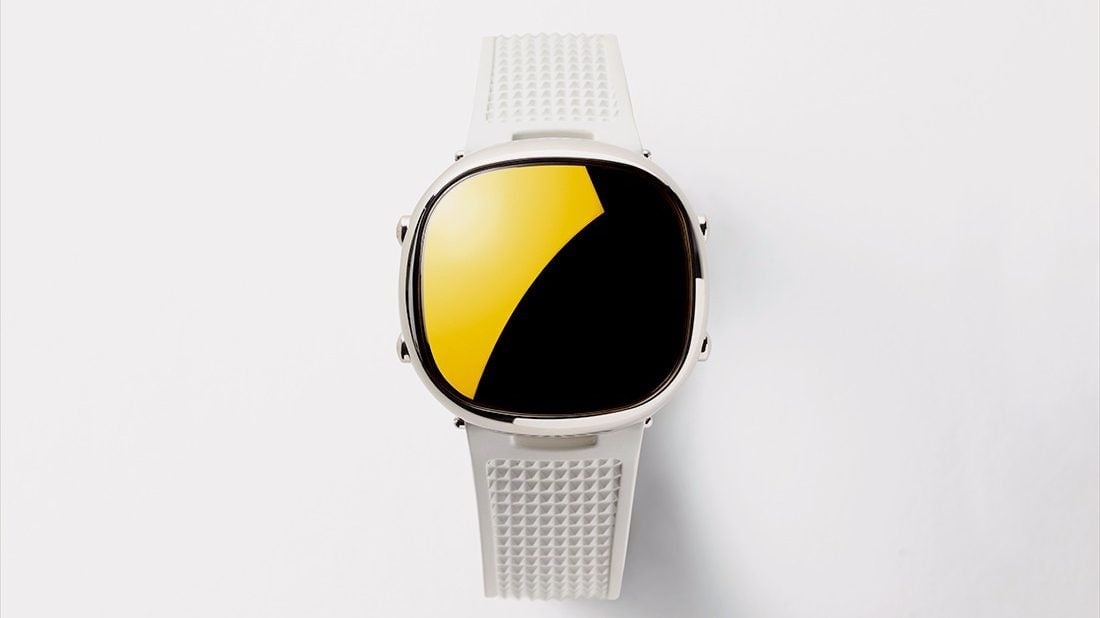At first folks thought the Apple Watch was ugly. Now, fashion watches are copying it
When the Apple Watch was unveiled in September 2014, the general consensus among the fashion conscious and tech savvy (and those who are both) was that it was ugly and overpriced—even if you added precious metals and a leather Hermes strap. “18-karat gold hardware in and of itself does not make for a sound investment (unless you were planning on smelting it down),” wrote an editor at Complex. But Apple played the style and aesthetics long game. Now, you’re seeing watches designed to look like a smartwatch—even if they don’t do anything more smarter than simply tell time.


When the Apple Watch was unveiled in September 2014, the general consensus among the fashion conscious and tech savvy (and those who are both) was that it was ugly and overpriced—even if you added precious metals and a leather Hermes strap. “18-karat gold hardware in and of itself does not make for a sound investment (unless you were planning on smelting it down),” wrote an editor at Complex. But Apple played the style and aesthetics long game. Now, you’re seeing watches designed to look like a smartwatch—even if they don’t do anything more smarter than simply tell time.
Back in November, Ashley Olsen and Mary-Kate Olsen’s contemporary designer label, Elizabeth and James, released its first watch collection, the 200 Series, retailing for $200 each. “The 200 Series applies our minimalist design values to the world of technology,” Ashley explained.
Like the Apple Watch, each 200 Series watch comes with a rubber wrist strap—aka a sports band—and features a crystal face with stainless steel hardware. Unlike the Apple Watch, this watch uses retro technology LED (Light Emitting Diode) for its digital displays, and while you can’t download apps or make calls, it does have one feature that you won’t find on your smartwatch: the opaque watch face makes a great on-the-go mirror.
The prices for Apple Watch-inspired competitors can run the gamut. There are teen fashion retailers who sell Apple Watch lookalikes, with a rubberized band and modular interface, for only $9. Calvin Klein has a $260 rubber strap watch with a deceiving flat screen. And for less than $7, you can buy a LED watch with a rubber band, crystal face, and stainless steel hardware from Walmart.
Tech-inspired timepieces like the Elizabeth and James 200 Series watch is an example of a “fashion watch”—a timepieces category with styles to mirror the trends of their times (which today prominently includes techie watches). “100 years ago, the ‘fashion watch’ was really low-end mechanical watches with a lot of rocks on them,” James Lamdin, founder of Analog/Shift and a vintage watch collector, explained, asking me to Google “art deco cocktail watches” as proof. “They were reflections of whatever the styles were at the time,” which included Deco. By the 1970s, mechanical watches that you had to manually wind up were largely displaced by digital watches. “They were far less expensive, and frankly, told better time,” he said.
Convenience—or even accuracy and precision—don’t automatically translate to timelessness, though. Which is why Lamdin, who appraises watches for a living, doesn’t believe that the smartwatch will ultimately replace classic mechanical watches (like a $56,000 Audemars Piguet) on a luxury or investment scale no matter how function-filled they become. “The appeal of the mechanical watch is the emotion, not the practicality,” he said. “You, as the user, bond with that device and, provided you keep it serviced, it needs you to survive. You become the custodian of something that lasts forever.”
That’s not to say Apple Watch-style pieces like the Series 200 won’t be collectibles one day. In Lamdin’s experience, cheap digital watches from Swatch and beefy sports watches from G-Shock have become timeless collectibles, too. The distinction is that “both of those brands were doing their own thing and became iconic for their own thing,” Lamdin said. When these first watches came out, everyone thought they were ugly. Critics might have said the same thing about the Apple Watch, but its sheer uniqueness suggests its potential for longevity and even icon status.
Still for many folks—even folks with serious style and savvy—the real problem with tech-focused watches is…er…the technology. “I think the Apple Watch design is great,” Matthew Hranek, author of A Man and His Watch: Iconic Watches and Stories from the Men Who Wore Them, said. “It just doesn’t fit into my world. I can barely charge my phone, let alone a watch.”
Hranek also notes that many elements embraced by tech firms have actually been used for classic watches for decades. Luxury watches like the Rolex Dive Watch, for instance, have always featured the type rubber sports straps currently embraced by Silicon Valley watch-makers. It’s Apple, he suggests, that is trying to copy them. “If there is any trend,” he says, “it is the smartwatch players trying to up their game with 14K gold brackets and Hermes leather straps.”